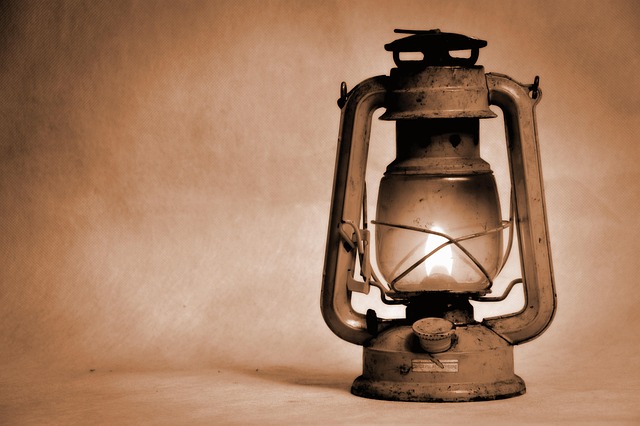The timing belt, a critical engine component, requires regular inspection and timely replacement to prevent damage. Signs of wear include slacking, misalignment, cracks, fraying, or stretching. Following manufacturer-recommended intervals saves costs and avoids failures. DIY installation saves money but needs expertise; professional services ensure accurate fitting and safety. Choosing quality parts with warranties prevents future engine damage and costly breakdowns. Regular maintenance and proactive inspection reduce risks of unexpected breakdowns, saving on repairs. Consulting local auto shops specializing in Select Timing Belt Replacement is crucial for optimal engine health and cost savings.
Looking to save big on your vehicle’s maintenance? Understanding when and how to replace your timing belt can be a game-changer. This crucial component ensures your engine’s smooth operation, and its timely replacement can significantly reduce repair costs. In this guide, we’ll walk you through the importance of timing belts, signs of wear and tear, DIY vs professional options, and maintenance tips to help you make informed decisions when it comes to Select Timing Belt Replacement.
- Understanding Timing Belt Importance
- Recognizing Wear and Tear Signs
- Cost Comparison: DIY vs Professional
- Timely Replacement Saves Money
- Quality Parts for Longevity
- Maintenance Tips for Future Savings
Understanding Timing Belt Importance

The timing belt is a crucial component in your vehicle’s engine that synchronizes the rotation of the crankshaft and camshaft, ensuring smooth and efficient operation. Understanding its significance is vital when considering how to save big on replacement parts. A well-maintained timing belt can last for hundreds of thousands of miles, but over time, it wears out, stretches, or becomes damaged due to various factors like high mileage, extreme temperatures, or contaminants in the engine oil.
Choosing the best time for timing belt service is essential for both cost and performance savings. Regular inspection and timely replacement can prevent costly engine damage. While some may opt for cheap timing belt replacement, investing in a long-lasting solution could be more economical in the long run, as it reduces the need for frequent replacements. Even do-it-yourself timing belt installation can help save costs, but it’s crucial to ensure proper fit and functionality, which is why many experts recommend seeking professional advice for this critical task.
Recognizing Wear and Tear Signs

Recognizing signs of wear and tear is key when considering a Select Timing Belt Replacement. Over time, your vehicle’s timing belt can show signs of degradation, making it a crucial component to monitor. Regular visual inspections can help identify potential issues before they turn into costly repairs. Look for any slacking or misalignment in the belt, as well as cracks, fraying, or excessive stretching. These are all indicators that the timing belt may need replacing.
By staying vigilant and implementing best practices for timing belt maintenance, such as adhering to manufacturer recommendations for replacement intervals, you can save big on costs associated with unexpected failures. Knowing where to get a timing belt replaced, whether through a professional mechanic or attempting a DIY timing belt change, depends on your comfort level and the condition of your vehicle.
Cost Comparison: DIY vs Professional

When considering saving on replacement parts, especially for complex tasks like a timing belt replacement, it’s crucial to compare DIY versus professional services. While some car owners are comfortable tackling such repairs themselves, keeping in mind that timing belts are mission-critical components can prevent costly future damage, making professional installation preferable.
The cost comparison is multifaceted. On one hand, DIY timing belt replacement can be significantly cheaper as you avoid labor fees charged by local auto shops for this procedure. However, factoring in the parts needed for timing belt replacement—which, depending on your vehicle model, could cost several hundred dollars—the savings might not be substantial. Moreover, selecting the right parts is critical; an incorrect fit or subpar quality can compromise engine health. In contrast, professional mechanics have access to genuine OEM parts and specialized tools, ensuring a precise, safe, and effective timing belt replacement, justifying the associated costs.
Timely Replacement Saves Money

Choosing the right time to replace your vehicle’s timing belt is a key strategy to save big on maintenance costs. Timely replacement isn’t just about preventing costly breakdowns; it’s also a way to safeguard against the risks of driving with a bad timing belt. A faulty timing belt can cause severe engine damage, leading to expensive repairs or even total engine failure. By proactively replacing your timing belt according to manufacturer recommendations, you sidestep these hazards and protect your wallet in the long run.
Consider that an alternator belt replacement, while necessary, is often part of the same routine maintenance as a timing belt change. Opting for long-lasting timing belt solutions can further reduce frequency of such replacements, making it an economical choice. Remember, preventing is always more cost-effective than repairing, so staying on top of your vehicle’s timing belt needs is crucial for maximizing savings.
Quality Parts for Longevity

When considering saving big on replacement parts, one crucial aspect often overlooked is prioritizing quality to ensure longevity. While it might be tempting to opt for the cheapest available options, particularly for less critical components like timing belts, this approach could lead to significant future costs and vehicle damage. A high-quality timing belt, chosen through informed research or consultation with trusted local auto shops, can significantly extend the life of your engine by preventing costly breakdowns.
Selecting the right timing belt replacement involves more than just cost comparison. It’s essential to consider warranties that come with the part, ensuring peace of mind and potential savings on emergency timing belt service. Many reputable manufacturers offer extended warranties, confirming the durability of their products. Moreover, learning how to replace the timing belt yourself can further reduce expenses, but remember that incorrect installation may void warranties, so proceed with caution or seek assistance from professionals if needed.
Maintenance Tips for Future Savings

Regular maintenance can significantly impact your future savings on replacement parts. One crucial aspect to focus on is the timing belt—a component that, if neglected, can lead to costly repairs. Here are some tips to help you stay ahead of the curve:
Timely replacements are key. While comparing timing belt vs chain belt options, remember that a well-maintained timing belt can last much longer than its counterparts. Ignoring its condition can result in serious consequences, such as engine damage due to a broken or slipped belt. Regularly inspect it for signs of wear and tear, and consider consulting with local auto shops who offer expert advice on Select Timing Belt Replacement. Staying proactive reduces the risks of driving with a bad timing belt, ultimately saving you from unexpected breakdowns.
By understanding the importance of your vehicle’s timing belt and recognizing signs of wear early on, you can save big on replacement parts. Comparing DIY options with professional services, performing timely replacements, and investing in quality parts will not only extend your engine’s lifespan but also reduce long-term maintenance costs. Follow these maintenance tips for future savings, ensuring your vehicle stays reliable and affordable. When it comes to selecting a timing belt replacement, prioritize both performance and cost efficiency.
